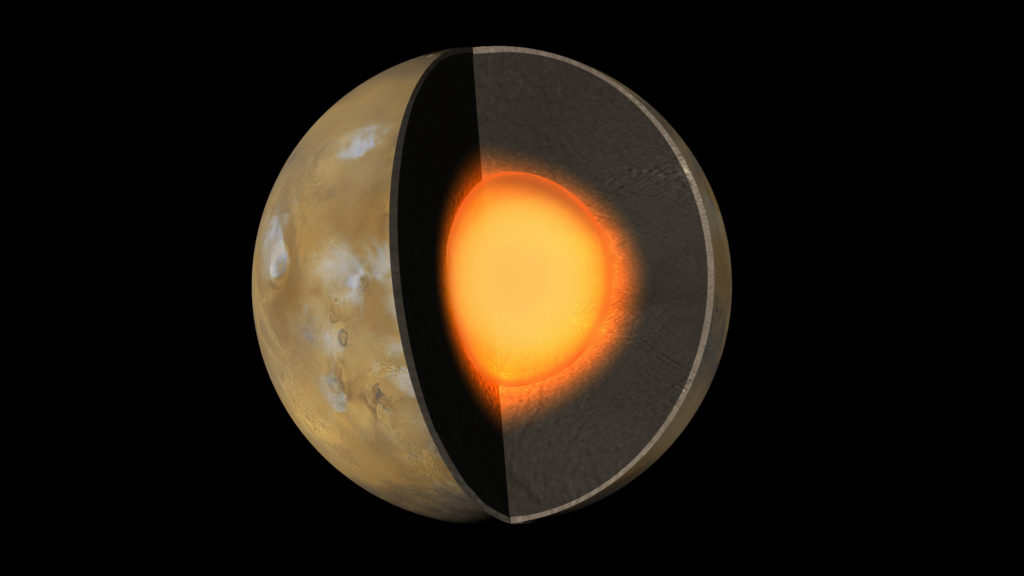A Martian meteorite shakes up theories surrounding the formation of Mars. She suggests that the red planet would have formed very quickly, and that the atmosphere would have evolved in a mysterious way.
A little over two centuries ago, a meteorite fell in Haute-Marne, in the town of Chassigny. And, today, this rock that arrived from Mars is at the heart of a study that troubles planetary scientists. She appeared in Science this June 16, 2022.” We wanted to trace the origin of the volatile elementstells Numerama one of the authors, Sandrine Péron, and we had surprises. »
The French, researcher at ETH Zurich in Switzerland, closely measured the amount of krypton present in the sample of the Chassigny meteorite. ” The result is that the amount of krypton shows us that this rock is similar to chondrite meteorites, but this is contrary to what the models say. »
Why is the presence of this gas in these proportions so original? Because it doesn’t fit at all with the theory of how Mars and the other planets formed. The model has it that the planets form in the solar nebula, the gigantic cloud of gas present during the early days of the solar system, from which the star and the planets were born. Gradually, the gas gathers under the effect of gravity and forms in the center, a proto-star, and in the periphery, planets.
A solar atmosphere and a meteoritic basement?
The proto-planets are then balls of magma in fusion and recover in the solar nebula volatile elements such as nitrogen, carbon or krypton which dissolve in the magma. Underground rocks are then considered solar.
Secondly, the chondrite meteorites crash on the surface and throw the volatile elements they carry into the atmosphere. There is thus a difference between the origin of the volatile elements which comes here, not from the solar nebula, but from the meteorites. This is how the Earth would have been formed.
But measurements of the Mars atmosphere in situ show us that this is not how things happened for the red planet. On the contrary, the atmosphere is solar, and not meteoritic. So the hypothesis to explain this is that the gas contained under the magma escaped, once the solar nebula disappeared, and ended up in the atmosphere.
” As for the solar atmosphere, we have evidencesummarizes Sandrine Péron. But we had doubts about the basement. All the models suggest that it should also be solar… But our study says otherwise! »
The Chassigny meteorite studied here is very particular, since it is supposed to come from the center of the planet. It would have been expelled during an impact, would have traveled a few million years in space, before landing on Earth. According to the theory, it should therefore be of solar origin, formed when the nebula had not yet dissipated. But no ! It looks like a rock contaminated with chondrites. To reach this conclusion, the authors used krypton, which until then had not been extensively studied. And for good reason, this gas is rare, which makes its detection and a fortiori its analysis difficult. Other studies of this type focus more on xenon, which is much more accessible.
” Krypton is practical, specifies the researcher, because it is a good tracer of the origin of gases. We managed to have a protocol to make precise measurements of krypton isotopes, which was very difficult until now. And here it is clearly not solar. The classic volatile element acquisition model does not work for Mars. »
After krypton, the hunt for neon
So the question is: how did material from the chondrites end up under the surface of Mars? The most probable hypothesis would be that the chondrite meteorites fed Mars with volatile elements, while the planet was still forming and the solar nebula had not completely dissipated.
This suggests that the planet must have formed extremely quickly with chondrite meteorites, and that when the magma cooled and solidified, the atmosphere was created via the solar nebula. There was no degassing of the meteoritic elements as expected, otherwise the atmosphere would have been of meteoritic origin as well (but this is not the case). In other words, the growth of Mars was already completely finished while the nebula was still there.

The problem with this new model is that it does not explain how the atmosphere of Mars, if it also formed so quickly, could have been preserved when the radiation from the nebula should have made it almost disappear. fully. Sandrine Péron has a hypothesis: “ We believe that the krypton in the atmosphere became trapped underground, or in ice caps, before emerging preserved once the nebula disappeared. »
All this shakes up knowledge about the formation of Mars, and unfortunately, the key to the enigma will not arrive for another few years. “One way to learn more would be to study neonsuggests Sandrine Péron. It is another important gas for knowing how Mars was formed, but it is undetectable on meteorites, because the traces have been completely masked by their passage through space, subjected to cosmic radiation. »
The hope of studying neon then rests on Perseverance and the sample returns it intends to carry out. With Martian rocks preserved and brought safely back to a laboratory on Earth, the full history of Mars could be traced.
